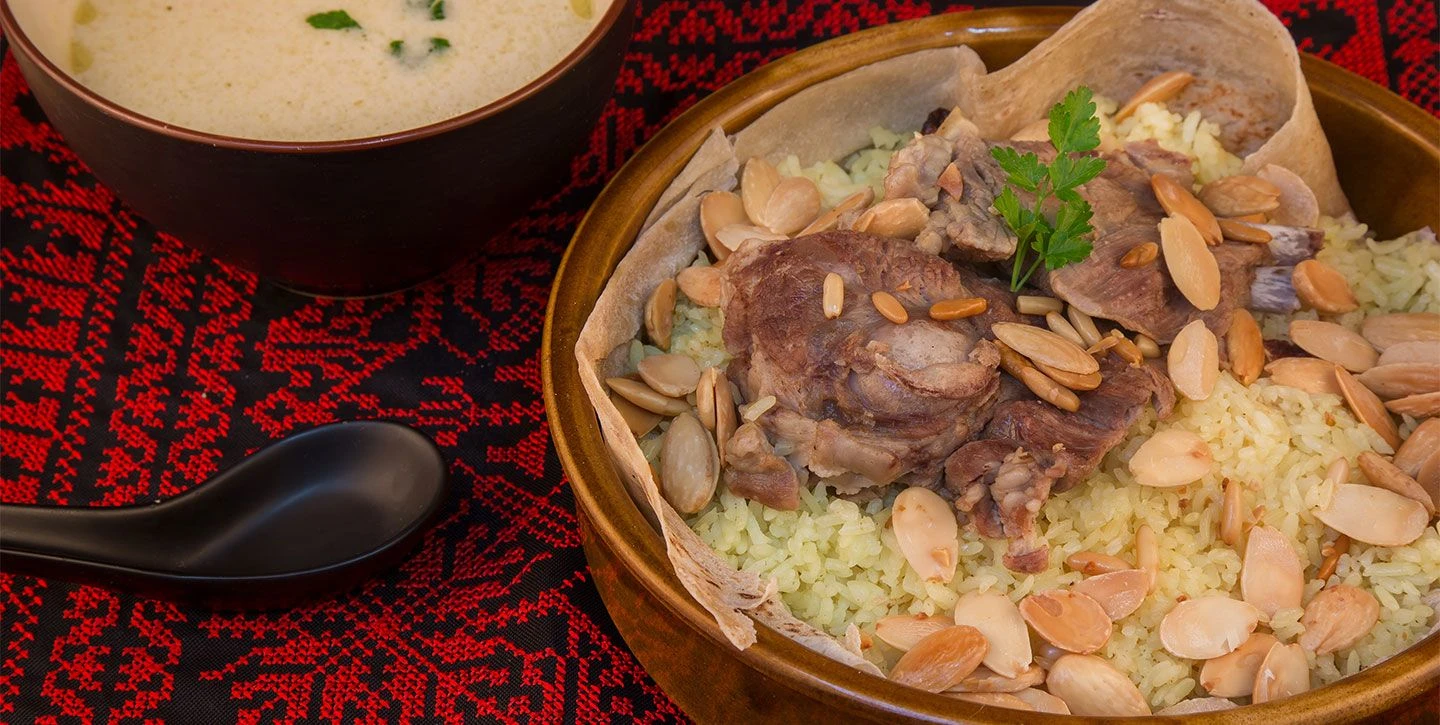Hello, food enthusiasts! Today, we are embarking on a culinary journey to the heart of the Middle East - Jordan. The Jordanian cuisine, with its rich flavors, unique ingredients, and complex techniques, is a testament to the country's vibrant history and diverse culture. This cuisine is characterized by its simplicity, yet each dish is a symphony of flavor that tells a story about the people and the land.
Jordanian cuisine is a magical blend of Mediterranean ingredients, Middle Eastern spices, and traditional cooking methods. From fresh vegetables and aromatic herbs to high-quality meats and exquisite desserts, Jordanian food has something to offer for every palate. The uniqueness of this cuisine lies in the freshness of the ingredients, the variety of spices used, and the traditional methods of preparation, which have been passed down through generation.
Whether you're a seasoned traveler or a foodie looking to try new cuisines, Jordanian food offers an unforgettable culinary experience. With a variety of dishes to choose from, you can enjoy a full-course meal that will take you from the heart of Jordan's bustling cities to its tranquil countryside.
The Influence of Culture on Jordanian Cuisine
Culture has significantly influenced Jordanian cuisine. From the simple, hearty meals of the Bedouins to the lavish feasts of the cities, Jordanian food reflects the country's diversity and hospitality.
The Bedouins, for example, are famous for their hospitality and their traditional dish, Mansaf. This dish, made of lamb cooked in fermented dried yogurt and served over rice, is considered the national dish of Jordan. It is often prepared for special occasions and is a symbol of Jordanian generosity and hospitality.
In contrast, the cities, influenced by the Ottomans, offer a wide variety of dishes that incorporate different meats, vegetables, and spices. These dishes are usually more complex and require more preparation time, reflecting the city's lifestyle and its exposure to different cultures and cuisines.
Customize Your Dream Vacation!
Get in touch with our local experts for an unforgettable journey.
Plan Your Trip1- Mansaf: Jordan's National Dish
Mansaf, the national dish of Jordan, is more than just a meal - it's a celebration, a symbol of Jordanian hospitality, and a feast for the senses. The dish is a scrumptious concoction of tender lamb cooked in a sauce of fermented dried yogurt called Jameed, served over a bed of fragrant rice, and garnished with toasted almonds and pine nuts.
The beauty of Mansaf lies in its simplicity and the harmony of its ingredients. Every bite is a symphony of flavors - the succulence of the lamb, the tanginess of the Jameed, the aroma of the rice, and the crunch of the nuts. It's a dish that's meant to be shared, consumed in a communal setting, making the act of eating Mansaf a social event in itself.
Mansaf is not just a dish, it's an experience. It's an invitation to partake in Jordan's rich culinary heritage, to bond over food, and to create memories that last a lifetime. It's a testament to the generosity and hospitality of the Jordanian people, making it a must-try for anyone looking to savor the taste of Jordan!

2- Makloubeh: The Upside Down Dish
Next on our culinary tour is Makloubeh, a traditional Jordanian dish that never fails to delight with its unique preparation method and irresistible flavors. Makloubeh, which translates to 'upside down' in Arabic, is a one-pot dish made with layers of rice, vegetables, and meat, which is then flipped over before serving - hence the name.
Makloubeh is as much a visual treat as it is a culinary delight. With its vibrant layers of golden rice, succulent meat, and colorful vegetables, it's a dish that's sure to make a statement at any dining table. But the magic of Makloubeh lies not just in its presentation, but in its flavors.
The rice, cooked in a rich broth, is aromatic and flavorful. The vegetables, usually a mix of potatoes, aubergines, and tomatoes, add a wonderful texture and freshness to the dish. The meat, often lamb or chicken, is tender and succulent, its flavors seeping into the rice and vegetables. The dish is then topped with toasted nuts, adding a delightful crunch and richness. Makloubeh is a celebration of flavors and textures, a dish that's sure to leave you craving for more!
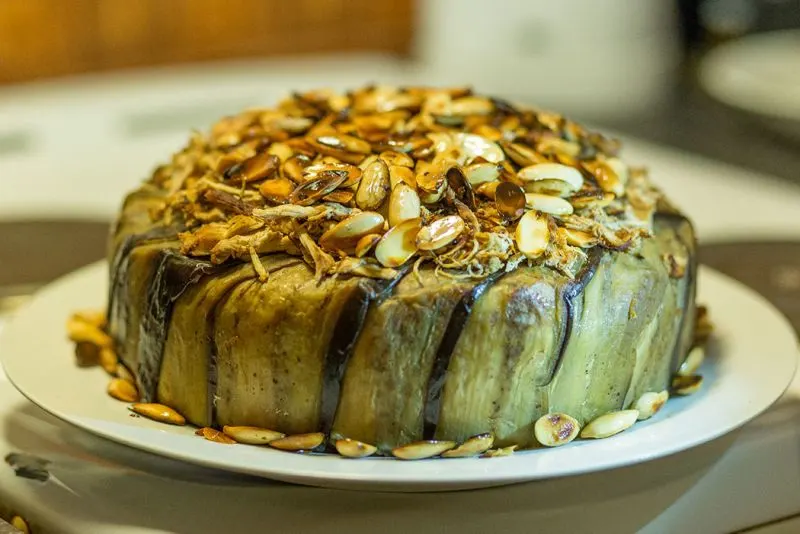
3- Musakhan: A Delicious Blend of Chicken and Bread
Moving on, let's delve into the world of Musakhan. Originated in Palestine, it is a very popular Jordanian dish that's a testament to the beauty of simple ingredients and traditional cooking methods. Musakhan, at its core, is a dish of roasted chicken baked with onions, sumac, allspice, and saffron, served atop taboon bread.
Musakhan is a dish that's steeped in tradition. The chicken, marinated with a mix of spices, is slow-cooked until it's tender and juicy. The onions, caramelized to perfection, add a sweetness that balances the tanginess of the sumac and the warmth of the allspice. The taboon bread, slightly crispy on the outside yet soft on the inside, soaks up all the flavors, creating a medley of tastes that's nothing short of divine.
But Musakhan is more than just its ingredients. It's a dish that's meant to be eaten with your hands, shared with loved ones, and enjoyed without any pretenses. It's comfort food at its best, a dish that's sure to warm your heart and soul!

4- Zarb: The Bedouin Barbecue
Next, let's venture into the desert landscapes of Jordan with Zarb, a traditional Bedouin barbecue. Zarb is not just a dish, it's a culinary tradition that's been passed down through generations, a testament to the Bedouin way of life.
Zarb is a method of cooking where marinated meat and vegetables are slow-cooked in an underground sand oven. The result is a feast of tender, smoky meat and beautifully roasted vegetables, all infused with the unique flavors of the desert.
The magic of Zarb lies not just in its flavors, but in the experience that accompanies it. The anticipation as the food is unearthed from the sand oven, the smoky aroma that fills the air, the communal setting in which it's consumed - Zarb is more than just a meal, it's an experience that's sure to leave a lasting impression!
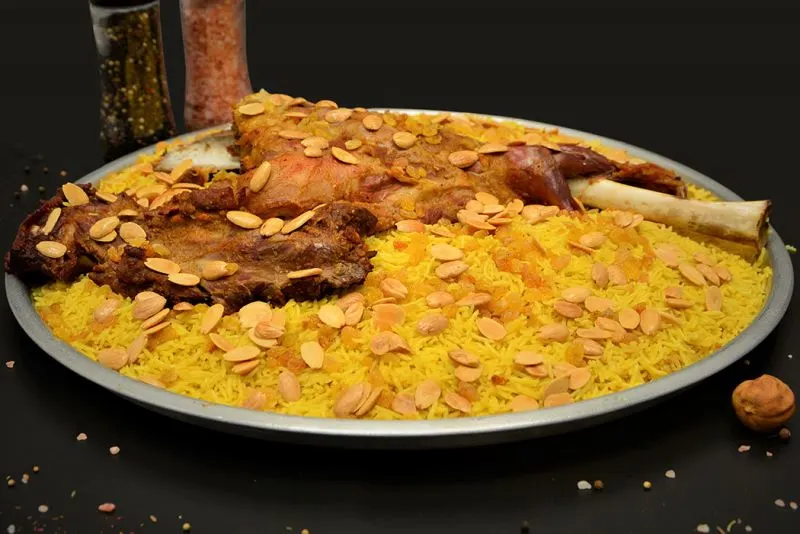
5- Galayet Bandora: The Tomato Dish You Must Try
No culinary journey through Jordan would be complete without trying Galayet Bandora, a simple yet delicious dish made with tomatoes. Galayet Bandora, often referred to as the 'peasant dish of Jordan', is a testament to the beauty of simplicity and the power of fresh ingredients.
Galayet Bandora is a dish made with ripe tomatoes, sautéed with olive oil, garlic, and spices, and often served with a side of rice or bread. The tomatoes, cooked until they're soft and bursting with flavor, create a sauce that's tangy, sweet, and wonderfully aromatic.
But Galayet Bandora is more than just a tomato dish. It's a dish that's comforting and nourishing, a dish that's versatile and humble, and a dish that's sure to leave you with a taste of Jordan that's as authentic as it gets!
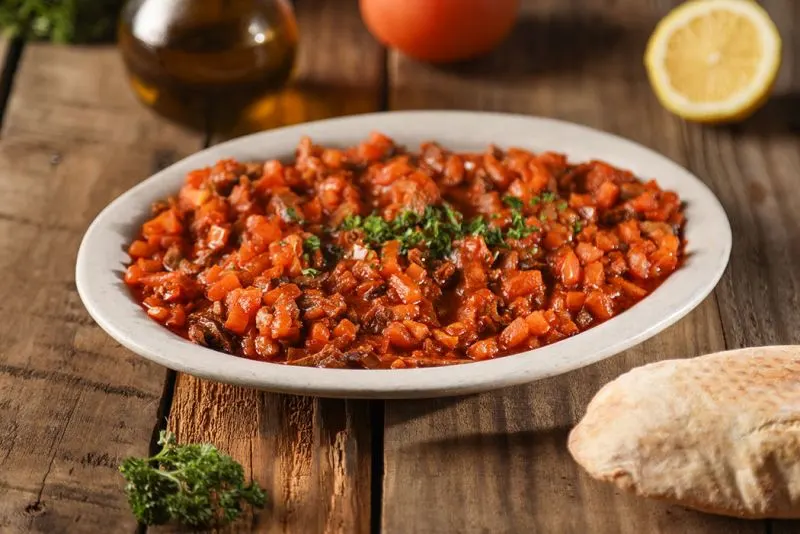
6- Barbeque & Mezzah: A Jordanian Feast
Next up in our food journey is the quintessential Jordanian feast - the Barbeque & Mezzah. This meal is a celebration of flavors and textures, a feast that's sure to tantalize your taste buds and leave you with a gastronomic experience like no other.
The barbeque, often a mix of lamb and chicken, is marinated with a blend of spices and grilled to perfection. The meat, tender and succulent, is beautifully complemented by the array of mezzah dishes that accompany it. From creamy hummus and smoky moutabel to tangy tabbouleh and crispy falafel, the mezzah is a testament to the diversity of Jordanian cuisine.
The Barbeque & Mezzah is not just a meal, it's a celebration. It's a chance to indulge in the flavors of Jordan, to share a meal with loved ones, and to experience the warmth and hospitality of the Jordanian people!
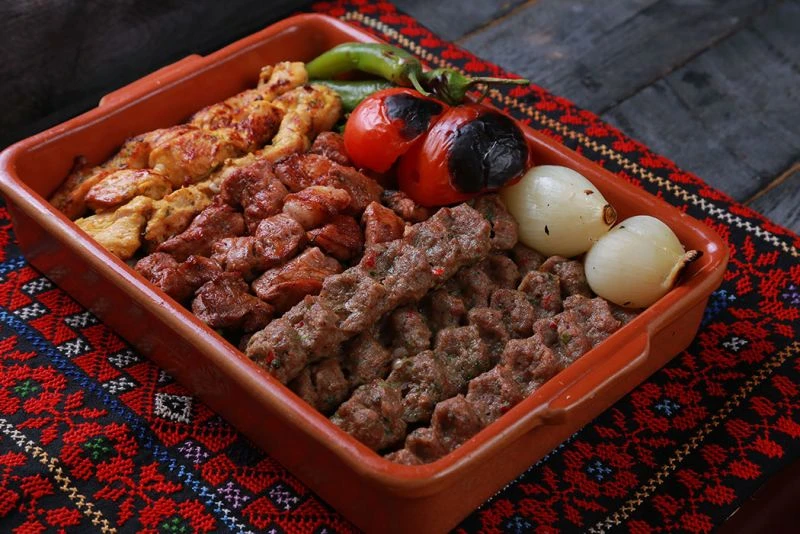
7- Hummus: The Role of it in Jordanian Cuisine
Hummus, a humble dip made with chickpeas and tahini, plays a crucial role in Jordanian cuisine. A staple in every Jordanian household, Hummus is more than just a dish - it's a tradition, a symbol of hospitality, and a testament to the power of simple ingredients.
In Jordan, Hummus is not just confined to being a dip. It's a versatile dish that can be used as a spread, a base for other dishes, or even a meal in itself. The beauty of Hummus lies in its simplicity and its ability to bring people together.
But Hummus is more than just its ingredients. It's the love and passion that go into its preparation, the way it's shared amongst loved ones, and the joy it brings to any meal. It's a dish that's humble yet powerful, a dish that encapsulates the spirit of Jordanian cuisine!
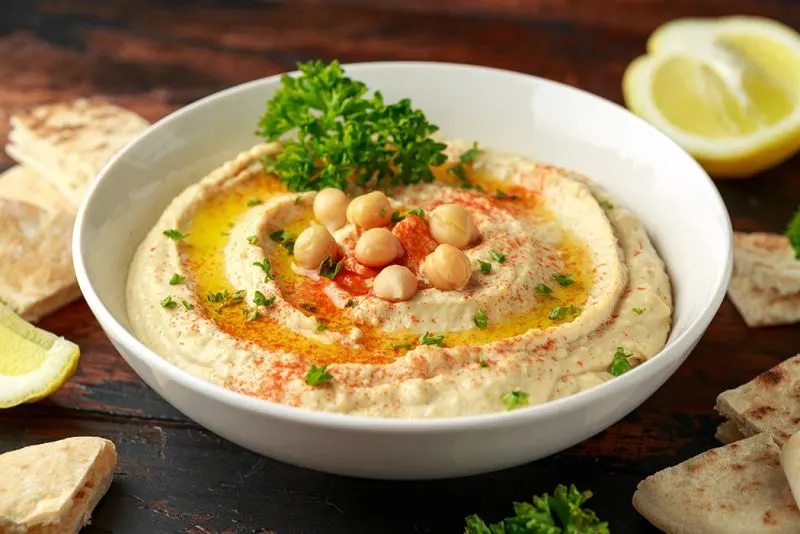
8- Moutabel: A Dip with a Difference
Next on our culinary journey is Moutabel, a smoky aubergine dip that's sure to delight with its unique flavors. Moutabel, often overshadowed by its famous cousin Hummus, is a dish that deserves its own spotlight.
Moutabel is a dish made with roasted aubergines, tahini, garlic, and lemon juice. The aubergines, charred to perfection, lend a smoky flavor to the dip. The tahini adds a richness, the garlic a zing, and the lemon juice a tanginess that balances the flavors beautifully.
But Moutabel is more than just a dip. It's a dish that's flavorful and versatile, a dish that's simple yet sophisticated, and a dish that's sure to leave you with a taste of Jordan that's as authentic as it gets!
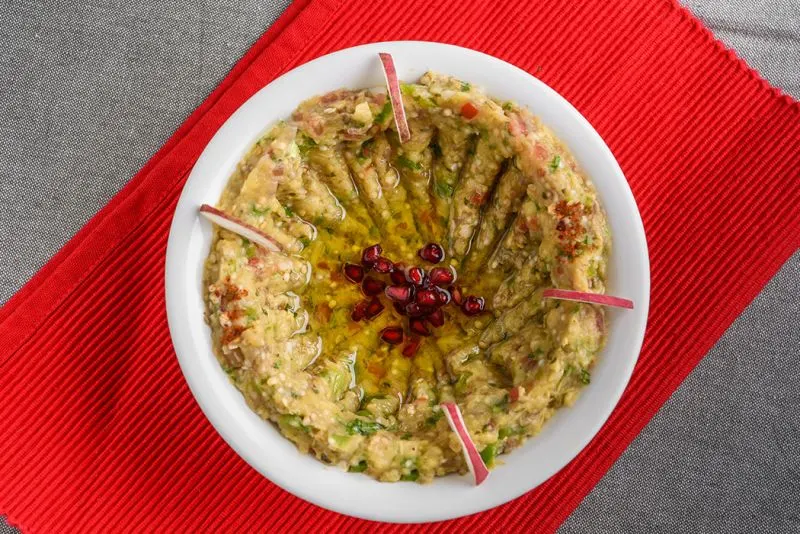
9- Labneh: The Versatile Dairy Product
Continuing our gastronomic journey, let's delve into the world of Labneh, a creamy dairy product that's a staple in every Jordanian household. Labneh, made by straining yogurt until it loses most of its liquid, is a versatile ingredient that can be used in a myriad of ways.
In Jordan, Labneh is often enjoyed as a spread on warm bread, drizzled with olive oil and sprinkled with za'atar. It's also used as a base for dips, as a topping for salads, or even as a filling for pastries. The Labneh, with its tangy flavor and creamy texture, adds a richness to any dish it's used in.
But Labneh is more than just a dairy product. It's a testament to the simplicity and versatility of Jordanian cuisine, a dish that's comforting and nourishing, and a dish that's sure to leave you craving for more!
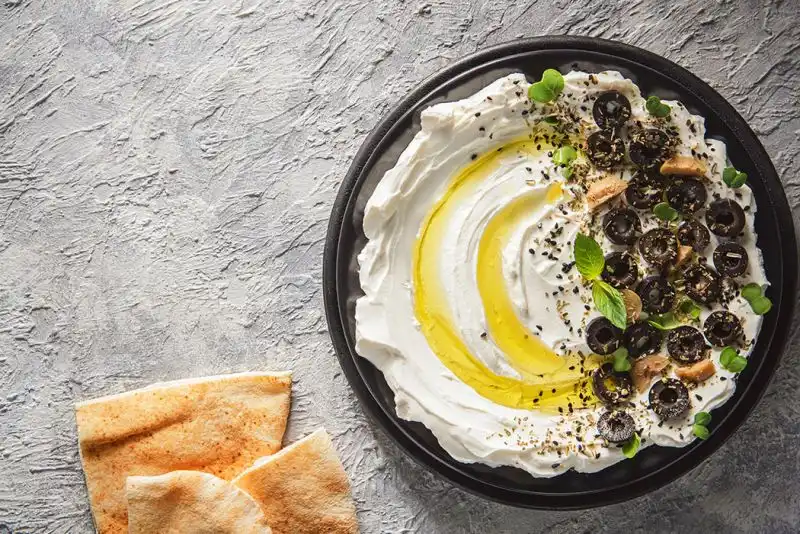
10- Falafel: The Middle Eastern Classic
No food journey through Jordan would be complete without trying Falafel, the Middle Eastern classic that's loved by all. Falafel, made with ground chickpeas or fava beans mixed with herbs and spices, is a dish that's as versatile as it is delicious.
In Jordan, Falafel is often enjoyed as a breakfast dish, stuffed into warm pita bread with a drizzle of tahini sauce. It's also a popular street food, served with a side of pickles and hummus. The Falafel, with its crispy exterior and soft, flavorful interior, is a delight to the senses.
But Falafel is more than just a dish. It's a symbol of the Middle East, a dish that's comforting and nourishing, and a dish that's sure to leave you with a taste of Jordan that's as authentic as it gets!
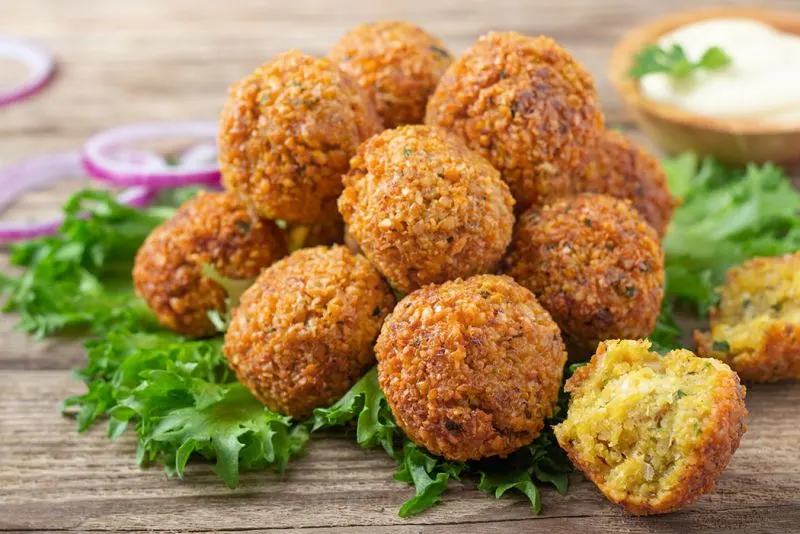
11- Shawerma: The Street Food Staple
Next on our culinary tour is Shawerma, the street food staple that's a favorite amongst locals and tourists alike. Shawerma, a dish of thinly sliced marinated meat wrapped in bread, is a testament to the flavors and simplicity of Jordanian cuisine.
In Jordan, Shawerma is often enjoyed as a quick snack or a meal on the go. The meat, often lamb or chicken, is marinated with a blend of spices and slow-cooked on a vertical spit. The bread, slightly toasted and filled with the succulent meat, pickles, and garlic sauce, creates a symphony of flavors that's hard to resist.
But Shawerma is more than just a street food. It's a dish that's comforting and satisfying, a dish that's quick yet flavorful, and a dish that's sure to leave you with a taste of Jordan that's as authentic as it gets!
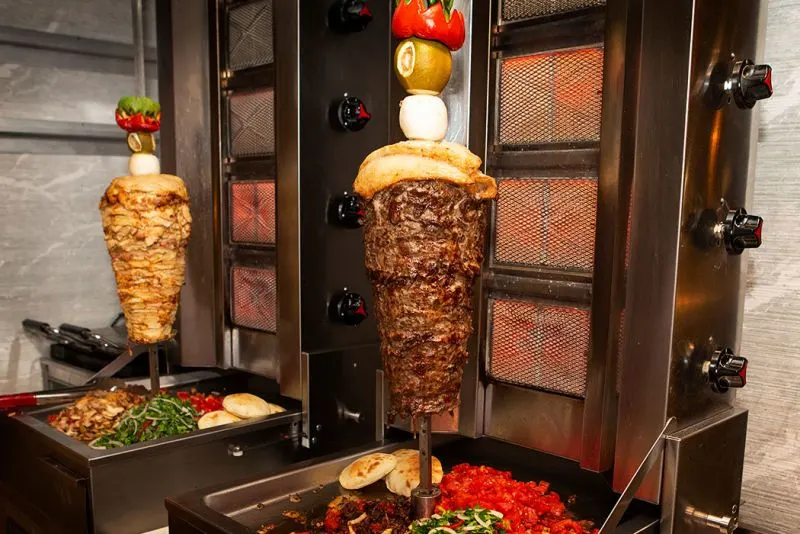
12- Ka'ek & Eggs: The Traditional Breakfast
Last but not least, let's explore the world of Ka'ek & Eggs, the traditional Jordanian breakfast. Ka'ek, a type of bread that's often ring-shaped and encrusted with sesame seeds, is a staple in every Jordanian household. Paired with eggs, it makes for a breakfast that's simple yet satisfying.
In Jordan, Ka'ek & Eggs is often enjoyed as a family meal, shared amongst loved ones. The Ka'ek, slightly crispy on the outside yet soft on the inside, is a perfect complement to the eggs, cooked to your liking. It's a breakfast that's sure to start your day on a delicious note!
But Ka'ek & Eggs is more than just a breakfast. It's a tradition, a symbol of togetherness, and a testament to the simplicity and comfort of Jordanian cuisine!
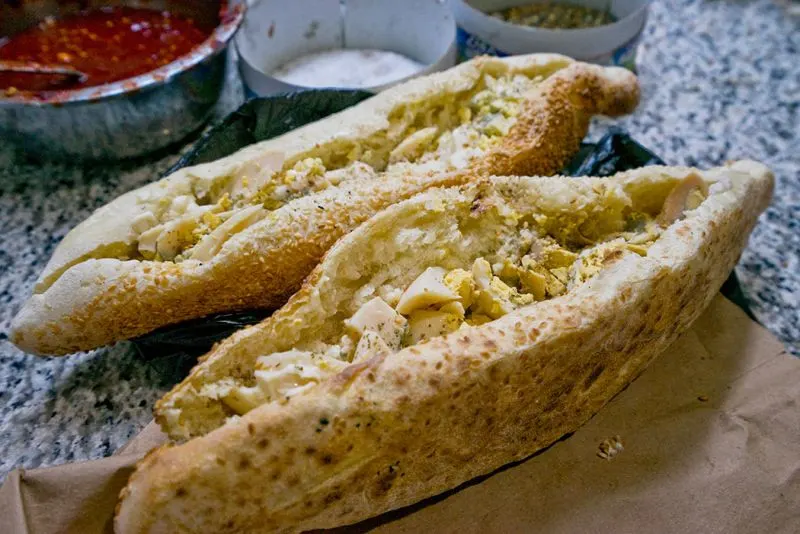
Conclusion: The Richness of Jordanian Food
Jordanian cuisine is a vibrant blend of flavors, cultures, and traditions. Its richness lies not just in its diverse dishes but also in the stories they tell about Jordan's history and its people. Whether it's the hearty Mansaf that speaks of Jordanian hospitality or the simple Ful Medames that fuels the start of the day, each dish is a culinary journey into the heart of Jordan.
So, next time you're looking to try a new cuisine or planning a trip to the Middle East, remember the flavorful world of Jordanian cuisine. It's a gastronomic adventure that you won't forget. And don't forget to check our exclusive Jordan Tours and explore the majestic attractions and the delicious Jordanian food. Bon appétit!
Related Articles
Keep the inspiration going with these handpicked travel reads.

